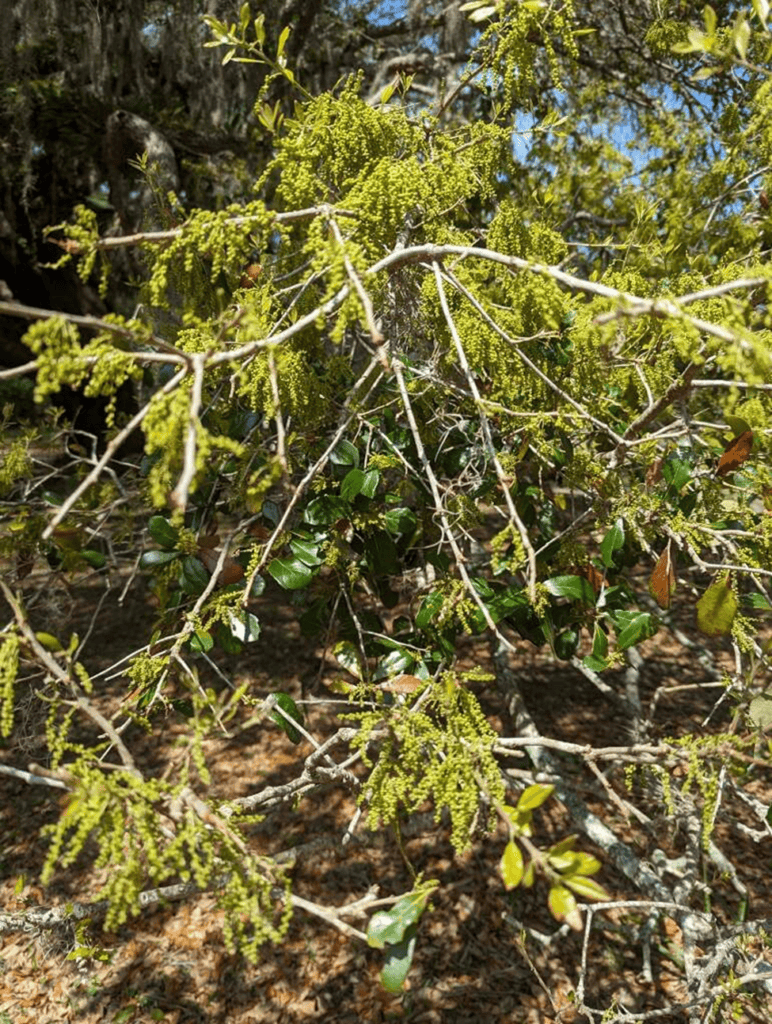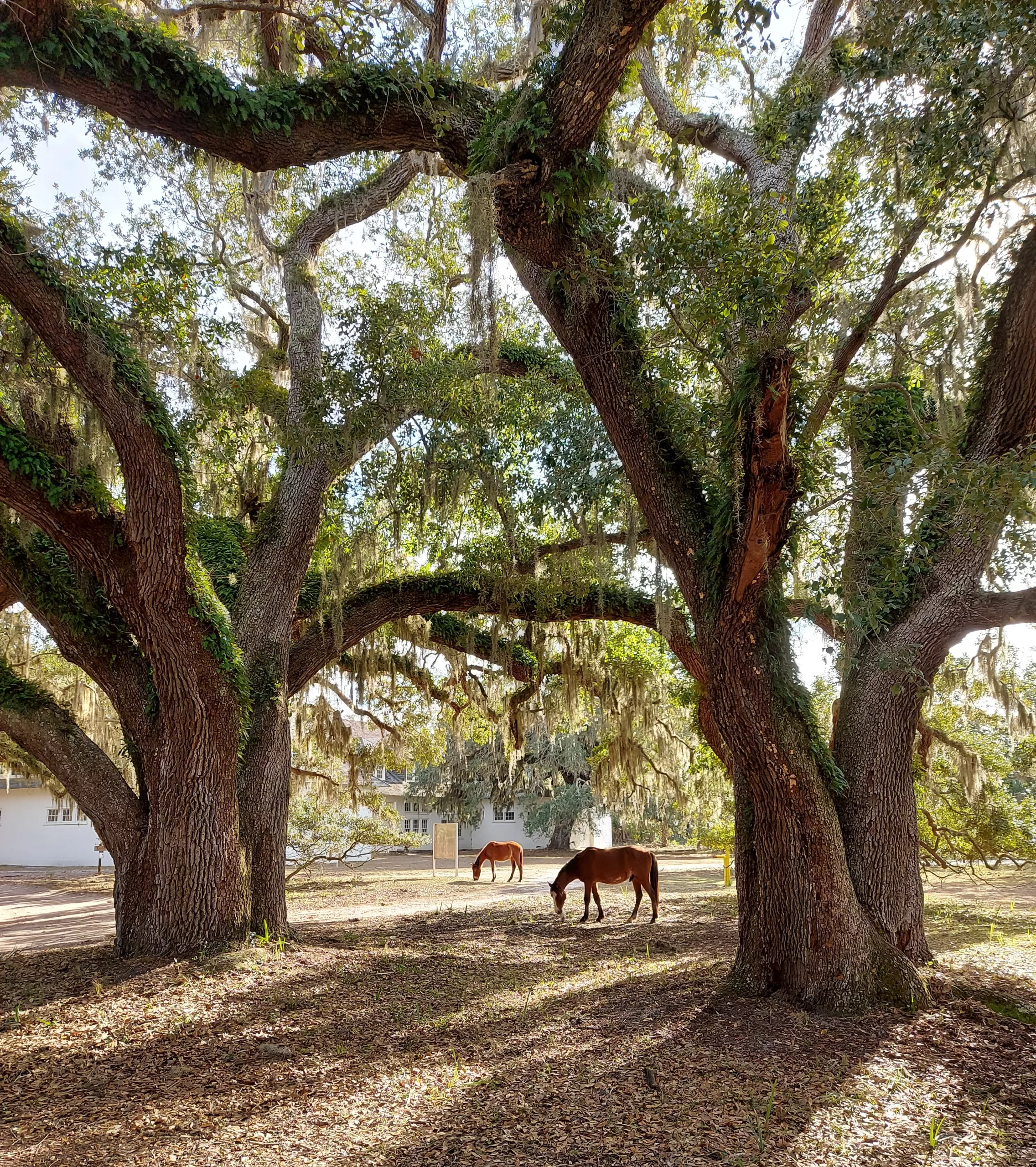Live Oak Catkins: Evil Masterminds Behind Yellow Pollen

This time of year, we cough, we sneeze, and our eyes itch. The culprit is live oaks’ yellow pollen, which envelopes our cars and anything else to which it can cling. As inconvenient as the pollen is, it tells a fascinating story. Here, we will explore live oak catkins, or flowers; the pollen they produce; and their importance to our ecosystem.
They’re Alive!
As their name suggests, “live oaks” keep their leaves year-round, but there is a small window in the spring when they shed their old leaves and sprout new ones. As they sprout these new leaves, the oaks simultaneously produce catkins.
“Male” Flowers?
Catkins are small, green, three-inch-long flowers which form on the ends of live oak twigs in clusters of ten to thirty. These catkins are in fact the male flowers of the tree, making the live oak a gendered organism. Live oaks, like many shade trees, produce separate male and female flowers on the same plant.
Catkins’ pollen-producing stamens release their pollen into the air, which the wind carries to the female flowers on other live oak trees. Many of our shade trees and weedy grasses use this pollen-releasing strategy, which is why there is so much pollen in the air this time of year.

On live oaks, small female flowers appear in clusters of green to reddish spikes where the leaves join the twigs of new oak shoots. A pollen grain which lands on a female flower’s pink stigma will sprout a pollen tube that grows toward the ovary to fertilize an egg. This egg could develop into a ripe acorn which would drop in early September.
I’m Nuts About You
The acorns’ sweet “meat” is consumed by birds, deer, and squirrels. In fact, if you see seedling oaks growing a short distance from your larger live oak tree, they probably have grown from acorns planted by the squirrels amongst your flower or vegetable beds.
Acorns are also healthy for humans to eat, as they are rich in protein, carbohydrates, fats, calcium, phosphorus, potassium, and niacin, but they are very bitter due to their tannin content. Historically, Native Americans ground the acorns into meal, and today, you can make them palatable by soaking them in water to remove their tannins.
Curli-cute
In addition to pollen, we are starting to see dried yellowish-green bunches of curlicues strewn across our porches; these are the catkins’ fallen blooms. Once the stamens have released their pollen into the air, the entire catkin falls from the tree, creating litter beneath the tree.

Fallen catkins and spent flowers enrich the soil and foster the growth of vegetation. Squirrels enjoy dining not just on acorns but on the blooms of the catkins, as well. We, too, may put these fallen catkins to use by raking them up and applying them to our garden beds as mulch or to a compost pile. Therefore, do not throw away the catkins as trash – either leave them where they lie to fertilize the soil or employ them in your garden!
Catkins are not only important to the environment; they can also be used for medicinal purposes. Some studies have shown that extracts form certain types of catkins can be used to treat various ailments, such as inflammation and pain.
Embrace the Sneeze
While the catkins’ pollen can be a nuisance, it is in fact part of an essential process that propagates our area’s beautiful live oaks. Without this transfer of pollen, there would be no fertilization and therefore no new live oak trees. In fact, without pollen, many species of plants would cease to exist, leading to a ripple effect throughout the entire food chain.
The arrival of live oaks’ yellow pollen means spring has arrived and life is renewed. Not only are the sources of this pollen – the catkins – beautiful, they help sustain many kinds of wildlife (and even us!). So the next time you sneeze due to their pollen, I hope you appreciate the catkins’ life-giving properties and perhaps even that pesky sneeze!
Want to learn more about Cumberland Island’s magnificent live oaks and fascinating history? Join us on a Cumberland Island Walking Tour!




0 Comments